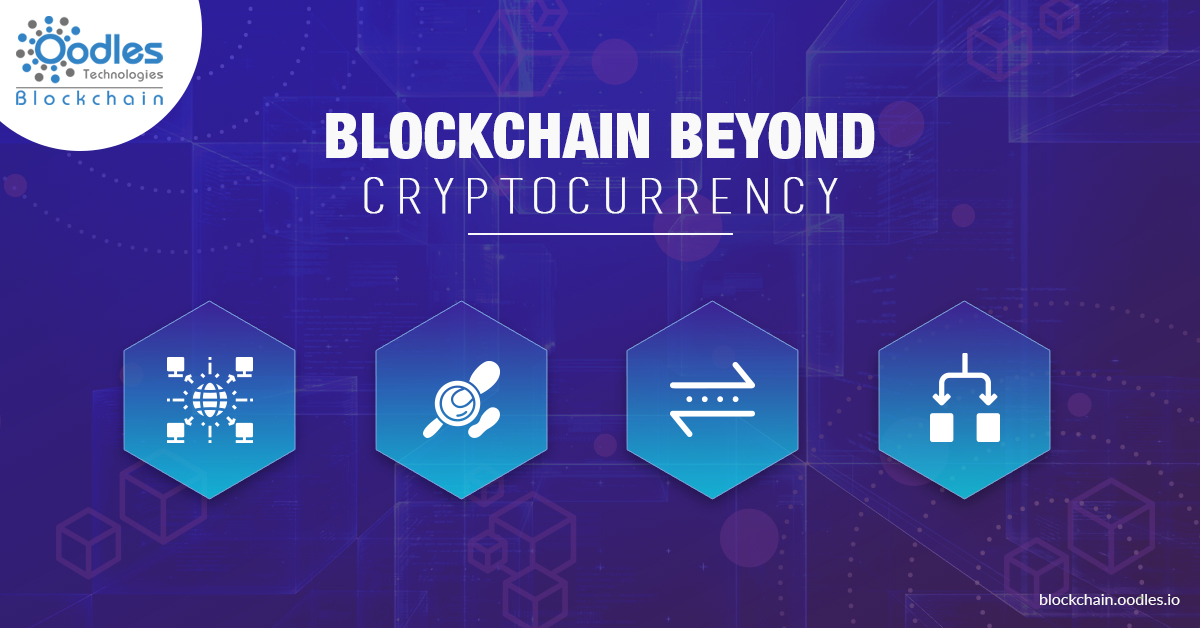What is Blockchain Beyond Cryptocurrency?

Imagine a world where trust is not a luxury but a fundamental aspect of every transaction. A world where intermediaries are unnecessary, and transparency is the norm. Welcome to the realm of blockchain beyond cryptocurrency. This revolutionary blockchain technology is transforming industries far beyond digital currencies, offering a decentralized ledger that promises to redefine how we interact, transact, and trust. But what exactly is blockchain beyond cryptocurrency, and how does it work? Let's dive in and explore the fascinating possibilities.
The Essence of Blockchain Technology
At its core, blockchain is a distributed ledger technology that records transactions across multiple computers in a way that ensures security, transparency, and immutability. Think of it as a digital ledger that anyone can inspect but no single entity controls. Each block in the chain contains a list of transactions, and once a block is added, it cannot be altered retroactively without altering all subsequent blocks. This makes blockchain an incredibly secure and reliable system.
Blockchain Beyond Cryptocurrency: The Broader Applications
While blockchain gained fame through cryptocurrencies like Bitcoin, its potential extends far beyond digital money. Let's explore some of the most exciting blockchain applications that are reshaping various sectors.
Supply Chain Management
Imagine tracking a product from its origin to your doorstep with absolute precision. Blockchain can make this a reality. By using a decentralized ledger, companies can ensure transparency and traceability in their supply chains. This not only reduces the risk of fraud but also enhances efficiency and builds consumer trust. For instance, Walmart is already using blockchain to track the provenance of food products, ensuring food safety and reducing waste.
Healthcare
In the healthcare industry, blockchain can revolutionize how patient data is managed. With a decentralized ledger, patient records can be securely shared among healthcare providers, ensuring that medical histories are accurate and up-to-date. This can lead to better diagnoses, personalized treatment plans, and improved patient outcomes. Moreover, blockchain can help in managing the supply chain of pharmaceuticals, reducing the risk of counterfeit drugs.
Smart Contracts
Smart contracts are self-executing contracts with the terms of the agreement directly written into lines of code. They automatically enforce and execute agreements when predefined conditions are met. This eliminates the need for intermediaries and reduces the risk of fraud. For example, in real estate, smart contracts can automate the transfer of property titles, making the process faster and more secure. Ethereum is a leading platform for smart contracts, offering a robust framework for developers to build decentralized applications (dApps).
Voting Systems
Elections are a cornerstone of democracy, but they are often plagued by issues of fraud and lack of transparency. Blockchain can provide a solution by creating a secure and transparent voting system. Each vote is recorded on a decentralized ledger, making it virtually impossible to tamper with. This ensures that every vote is counted accurately and fairly, enhancing the integrity of the electoral process. Estonia has already implemented blockchain-based voting systems, setting a precedent for other countries to follow.
The Future of Blockchain Beyond Cryptocurrency
As we look to the future, the potential of blockchain beyond cryptocurrency is limitless. From finance to healthcare, from supply chain management to voting systems, blockchain technology is poised to disrupt and transform industries. But to fully realize this potential, we need to address challenges such as scalability, interoperability, and regulatory frameworks.
Scalability is a significant concern, as current blockchain networks can handle only a limited number of transactions per second. However, innovations like sharding and layer-2 solutions are being developed to address this issue. Interoperability, the ability of different blockchain networks to communicate with each other, is another area of focus. Projects like Polkadot and Cosmos are working on creating interoperable blockchain ecosystems.
Regulatory frameworks are also crucial for the widespread adoption of blockchain. Governments and regulatory bodies need to create clear guidelines that foster innovation while protecting consumers and ensuring security. Collaboration between the public and private sectors will be key to developing these frameworks.
Conclusion
Blockchain beyond cryptocurrency is not just a buzzword; it's a transformative technology with the potential to revolutionize industries and enhance our daily lives. From ensuring transparency in supply chains to securing patient data and automating contracts, blockchain offers a decentralized ledger that promises trust, security, and efficiency. As we continue to explore and develop this technology, the possibilities are endless. So, are you ready to embrace the future of blockchain beyond cryptocurrency? The time to act is now.
FAQs
1. What is the primary difference between blockchain and traditional databases?
Blockchain is a decentralized ledger that records transactions across multiple computers, ensuring transparency and immutability. Traditional databases are centralized, controlled by a single entity, and can be altered more easily.
2. How does blockchain ensure security?
Blockchain ensures security through cryptographic techniques and a decentralized structure. Each block in the chain is linked to the previous one, making it virtually impossible to alter past transactions without altering all subsequent blocks.
3. Can blockchain be used for non-financial applications?
Absolutely. Blockchain has numerous applications beyond finance, including supply chain management, healthcare, voting systems, and smart contracts. Its decentralized ledger technology can enhance transparency, security, and efficiency in various sectors.
4. What are smart contracts, and how do they work?
Smart contracts are self-executing contracts with the terms of the agreement directly written into lines of code. They automatically enforce and execute agreements when predefined conditions are met, eliminating the need for intermediaries.
5. What are the main challenges facing blockchain technology?
The main challenges facing blockchain technology include scalability, interoperability, and regulatory frameworks. Innovations like sharding and layer-2 solutions are being developed to address scalability, while projects like Polkadot and Cosmos are working on interoperability. Clear regulatory guidelines are also needed to foster innovation and protect consumers.
```
Belum ada Komentar untuk " What is Blockchain Beyond Cryptocurrency?"
Posting Komentar